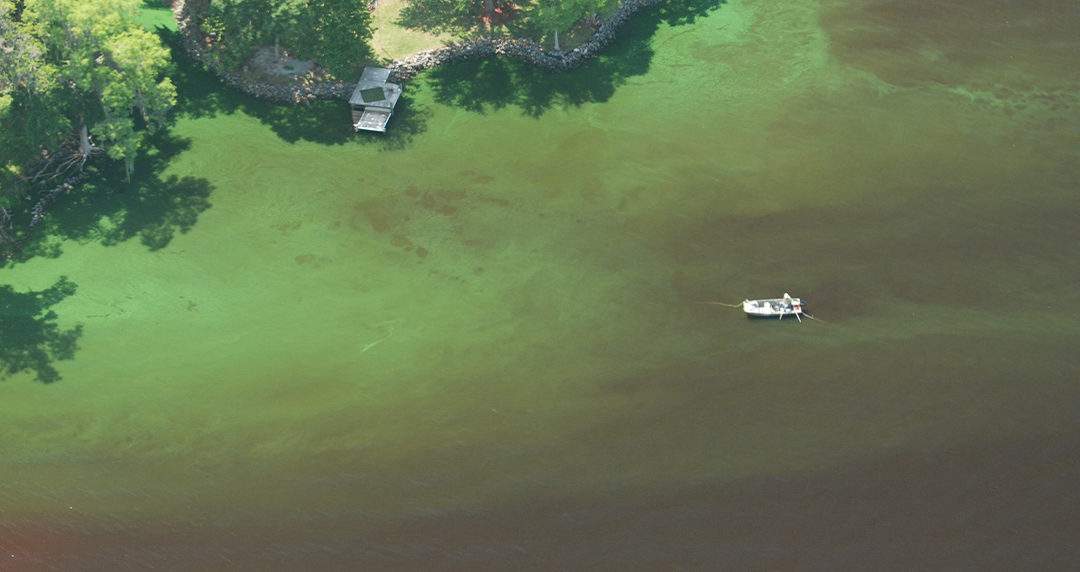We are receiving numerous reports of algae blooms on the St. Johns River from the Jetties in Duval to Crescent Lake in Putnam/Flagler. Here’s what you need to know:
What is an algae bloom?
Blue-green algae, also called cyanobacteria, are tiny organisms naturally found in our river. However, under the right conditions, algae can grow out of control, forming a green scum or mat on the surface of the water.
What causes an algae bloom?
Algae blooms are the result of excessive nutrients (phosphorous and nitrogen) in our waterways.
Some of the major sources of nutrient pollution in the St. Johns River include:
- The disposal of sewage sludge (also known as biosolids) on agricultural lands
- Fertilizer run-off from agricultural, urban, and residential lands
- Failing septic tanks and sewage spills
- Wastewater discharges from utilities and industries
- Chemical spraying to control aquatic plants
How do algae blooms affect our River?
Algae blooms deplete oxygen in the water causing fish kills, clog the gills of fish and invertebrates, and block sunlight from reaching submerged grasses. Some blooms can emit toxins that are harmful to wildlife.
How do algae blooms affect people?
Toxins produced by some algae blooms can cause rashes, stomach cramps, nausea, diarrhea, and respiratory irritation. High exposure to toxins can affect the liver and nervous system.
How do I keep myself and my pets safe?
If skin contact occurs, wash off immediately and thoroughly with clean water and soap. Pets can become sick from blue-green algae so keep them out of those areas and away from contaminated marine animals and fish. Learn more from the Florida Department of Health.
If you see what looks like bright green, paint-like scum on the surface of the water, steer clear. Do not recreate, boat, swim, or fish near an algae bloom. Not all algae blooms are toxic, but active blooms should be avoided.
How do I report an algae bloom?
Report algae blooms in the St. Johns River to the Florida Department of Environmental Protection (DEP) through their website, https://floridadep.gov/AlgalBloom, or call (855) 305-3903.
We ask that you also notify St. Johns Riverkeeper, so we can document the bloom and potentially collect a water sample, if necessary. Email report@sjrk.org with location and photos.
